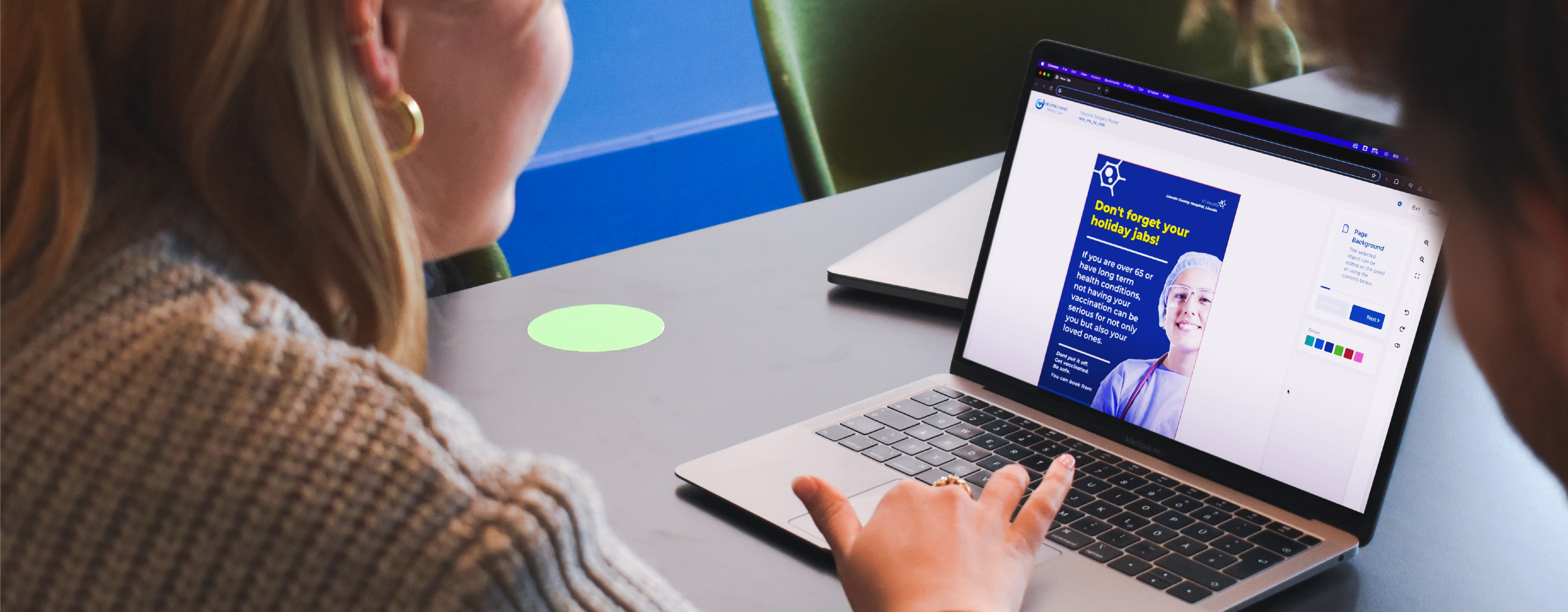
So you’ve heard plenty about brand portals, but what are they? What can they do? Is it worth investing in? We get it, you’ve got questions.
Answered in this blog;
what you’ll find on a brand portal, how it can be used and tailored to work for you, what are the advantages and what you will need to get started.

Written by:
Tina Brown
Think of a brand portal as a storefront for all of your brands documents - physical, digital or printed. It acts as a central hub for the whole team to access materials and order them to be printed or download them.
Let's talk visuals - what will it look like? The simple answer is however you want (it really is that customisable). But usually it will follow the format of an ecommerce website, the only difference is that you have to log in to see it. Watch our video to see it in action.

1 . Homepage (optional)
2 . Categories / subcategories
3 . Detailed product page including quantities and ‘Add to Basket’
4 . Check out
 Downloadable content (Social media images, logos, brand images)
Downloadable content (Social media images, logos, brand images)
Print content (Pre-designed materials such as posters, flyers, brochures)
Variable data content where there are fields to be filled in or chosen from a list (Business cards, direct mail with address fields, posters with varying information)
Physical items (Promo merchandise)
Let's put this into practice with the help of [our example brand], a retail giant.
Scenario 1 Let's say [our example brand] is an umbrella company with lots of sub brands [A] [B] [C] [D]. Adding each member of these sub brands into their own groups and changing permissions means they can only see their sub brand categories and products.
Scenario 2 Within these sub brands, purchases in the portal must be approved by a manager - a trigger email is set up to notify managers there are purchases waiting for approval. The order is placed, only when a manager approves it.
Scenario 3 Sub brand [C] has an in-store event coming up, there are large format posters on the portal, they have variable data areas where a user can change the percentage amount and the date the event will take place. Once they have entered their information, they can view a proof and send to print. This is then delivered to the store, it’s all taken care of.
Scenario 4 Sub brand [A] has multiple sites up and down the UK, they are running a direct mail campaign where the information on each postcard must be relevant to the local branch. The portal has a postcard design with a drop down list of all the branches in the UK - the information is automatically populated based on their choice of location. Each location is able to upload their excel spreadsheet mailing list - the address field is auto-populated and artwork created for all entries on the spreadsheet.

Save yourself time - spend less time on the little things, and give yourself time to focus on the bigger picture.
Ensure brand consistency - only brand-approved content is available on the portal - all signed off by the brand police (No stretched logos or incorrect fonts here!)
Efficiency - have confidence that everything is running smoothly
Save money - all that efficiency means you’re saving the pennies too!
We’ve compiled a list of everything you will need to get started in this blog, or download our free resource to start scoping out your brand portal project.

A brand portal acts as a home for your brand assets, this could include:
1 . Pre-designed assets - digital, printable and physical
2 . Assets that have variable data e.g, business cards where the details can be edited per person
3 . Brand related assets - Logos for print and web, brand guidelines etc.
It’s all managed in one central hub, with various log in permissions:
1 . Set up user groups with individual permissions on what assets a user can see
2 . Turn on/off categories or products you don’t want that group to see
Variable data templates are a life-saver
1 . Upload your own Excel spreadsheet mailing list to populate address fields and auto-generate artwork for direct mail campaigns
2 . Auto-populate artwork with information based on drop down list choices
3 . Control how much, or little editability a template has with free-type fields and image upload features.
Roger Genis
Amari West London

Linsey Briggs
CEF

Steve Hudson
Howarth Timber

Hannah Sherriff
Mainline

West Midlands Safari Park

FREE advice, insights and good vibes only - it's a no spam zone over here!
Unit 6, Maisies Way
South Normanton
Derbyshire
DE55 2DS
T: 01623 625222